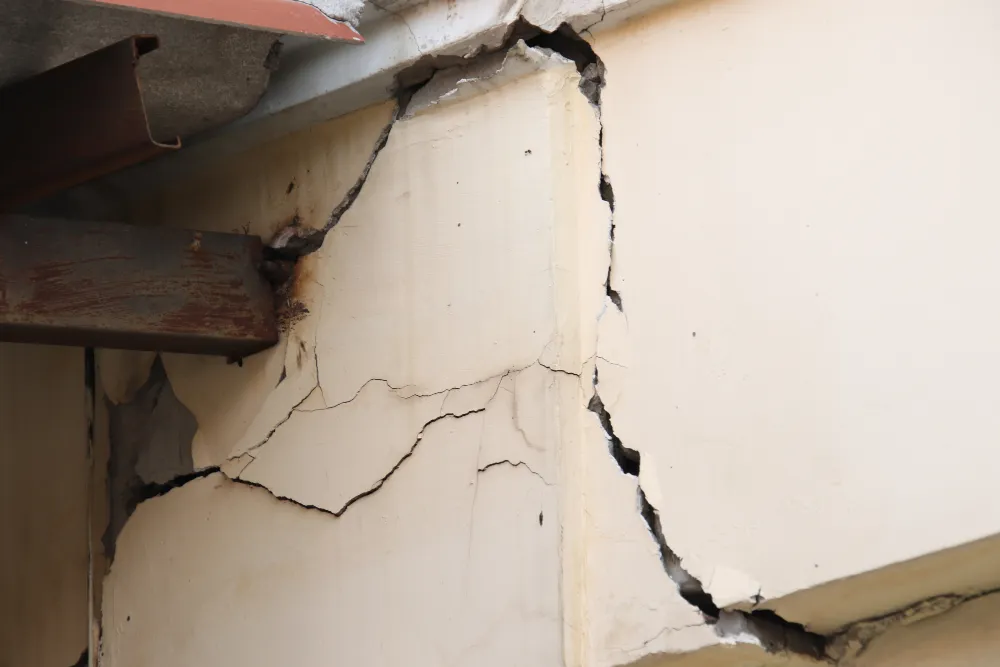The Raac Concrete Crisis in England’s Infrastructure: Schools, Hospitals, and Housing
Understanding the Issue: The Raac Concrete Disruption to England’s Infrastructure
Many schools in England, are currently facing significant disruption due to the presence of potentially dangerous concrete known as racc. This lightweight concrete, which was commonly used in the construction of schools, hospitals, public buildings, and housing from the 1950s to the mid-1990s, has become a cause for concern. As time passes, raac concrete degrades, posing a significant risk of collapse.

Hospitals, public buildings, and housing are also not immune to the impact of raac concrete. One such example is Hinchinbrook Hospital in Cambridge, which had to reinforce weak ceilings and restrict heavier patients to the ground floor due to the risk of roof collapse. The financial burden of mitigating the risks associated with raac concrete can be substantial, with repair bills potentially reaching seven figures for some properties.
Investigating racc concrete is challenging as it requires a comprehensive examination of the weight distribution on roofs and the condition of the concrete itself. This complexity further complicates the already overwhelming task of maintaining and ensuring the safety of public buildings in the United Kingdom.
Furthermore, the issue extends beyond just schools and hospitals. England’s housing stock, grappling with existing concerns such as dangerous cladding, now has to confront the additional challenge posed by racc concrete. The presence of these materials in residential buildings adds to the already pressing need for comprehensive inspections and maintenance.
Political Controversy Surrounding the Racc Concrete Saga: Positions of Major Parties and Implications
The racc concrete crisis has emerged as a politically charged issue, with each major party taking a different stance and highlighting the implications of the problem. The Labour Party is calling for a full audit of racc concrete in all public buildings to assess the extent of the issue and develop strategies for remediation. They argue that a comprehensive review is crucial to ensure the safety of occupants and prevent further disruptions.

In contrast, the Liberal Democrats have been critical of the government’s response to the racc concrete problem. They claim that the government has not adequately addressed the issue, leading to prolonged disruptions and increased risks for those residing or working in affected buildings.
The Department of Health and the Department for Education, responsible for the well-being and safety of individuals in schools and hospitals, assert that they have plans in place to address the challenges posed by racc concrete. However, concerns persist among experts and the public alike about the sufficiency of these plans and the funding allocated to tackle the issue effectively.
Scotland is also grappling with investigations into the presence of racc concrete in their schools and hospitals. Nicola Sturgeon, the late First Minister of Scotland, assured the public that thorough reviews are currently underway, and the safety of students, staff, and patients remains a top priority. Nonetheless, concerns have been raised regarding the potential collapse of older NHS buildings due to the presence of this hazardous material.
The racc concrete crisis has had political consequences, evident in the Scottish National Party’s (SNP) declining support. However, support for Scottish independence has remained steady, indicating the complexity and interconnectedness of political issues that extend beyond infrastructure challenges.
Current Measures and Future Prospects: Addressing the Racc Concrete Dilemma
The current measures in place to address the racc concrete dilemma involve a comprehensive review of affected buildings, with a focus on identifying properties at the highest risk. Thorough inspections and assessments are necessary to determine the extent of degradation and develop adequate strategies for repair and maintenance.
The Department of Health and the Department of Education have emphasised their commitment to resolving the issue and have allocated funds to support remediation efforts. However, concerns remain regarding the timeline and effectiveness of these measures. While it is crucial to act swiftly to prevent further disruptions and ensure the safety of individuals, rushing the process may compromise the quality and long-term sustainability of repairs.
Additionally, it is imperative to learn from past mistakes and focus on prevention. Building regulations and oversight need to be strengthened to prevent the recurrence of similar issues in the future. This includes rigorous testing, regular inspections, and the use of safer and more durable construction materials.
Public awareness and engagement are also key components in effectively addressing the racc concrete dilemma. Education campaigns can help individuals understand the risks associated with this material and empower them to identify potential signs of degradation. Encouraging individuals to report concerns and promoting a culture of safety within communities can further contribute to preventing further disruptions and potential risks to occupants.
Looking ahead, it is essential for policymakers and industry professionals to collaborate and develop long-term, sustainable solutions to tackle the racc concrete crisis. This involves prioritising investments in infrastructure and committing to regular assessments and maintenance to ensure the safety and integrity of buildings throughout England.

The racc concrete crisis in England’s infrastructure is a pressing issue that demands immediate attention and concerted efforts from all stakeholders involved. By understanding the magnitude of the problem, addressing political controversies, and implementing effective measures, England can navigate its way out of this crisis and build a more robust and resilient infrastructure for the future.






